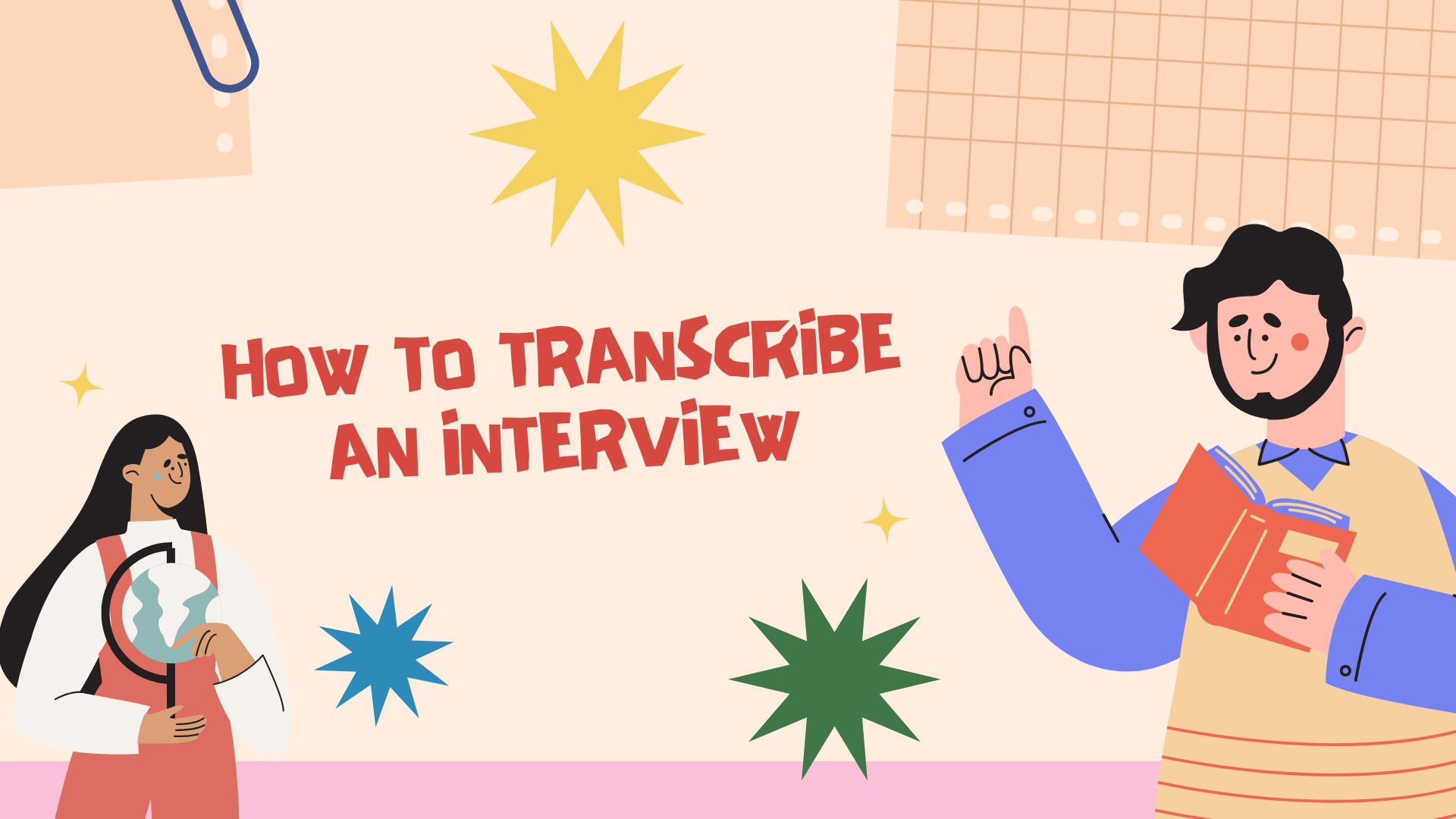Transcribing an interview is an essential process for journalists, researchers, podcasters, and business professionals who need accurate, written records of conversations. However, manual transcription can be time-consuming and tedious. Thankfully, in 2025, AI-gestuurde transcriptietools have made the process faster and more efficient than ever.
In deze gids behandelen we:
✅ The best methods for interview transcription
✅ A step-by-step guide to transcribing an interview
✅ AI-tools that speed up the process
✅ Best practices for accuracy and efficiency
1. Why Transcribe an Interview?
Transcription transforms spoken words into written text, making it easier to:
✔ Review & Analyze – Researchers and journalists can quickly scan for key points.
✔ Quote Accurately – Avoid misinterpretations when citing sources.
✔ Improve Accessibility – Text versions of interviews help those with hearing impairments.
✔ Repurpose Content – Convert interviews into artikelen, rapporten of blogberichten.
✔ Enhance SEO – Written transcripts help videos and podcasts rank better on search engines.
2. Step-by-Step Guide: How to Transcribe an Interview
Step 1: Choose Your Transcription Method
🔹 Manual – Use text editors (Google Docs, Notepad) or specialized transcription software (Express Scribe).
🔹 AI-gestuurd – Use tools like VOMO AI, Otter.ai, or Rev for automatic transcription.
Step 2: Prepare the Interview Audio
✔ Ensure the audio is clear and free from excessive background noise.
✔ If possible, use a high-quality microphone during recording.
✔ Convert files to compatible formats (MP3, WAV, or M4A).
🔹 Tip: If the interview was recorded via Zoom, Google Meet, or a voice memo, you can directly upload the file to VOMO AI voor transcriptie.
Step 3: Upload the Interview for Transcription
📌 Manual Method:
• Play the interview audio and type out each word manually.
- Gebruik een foot pedal (for professional transcriptionists) or keyboard shortcuts to pause, rewind, and replay efficiently.
📌 AI-Powered Method (Recommended):
1️⃣ Upload the audio file to an AI transcription tool like VOMO AI.
2️⃣ Wait a few minutes for the AI to process and transcribe the text.
3️⃣ Review & edit the transcript for accuracy.
4️⃣ Export the final transcript in text, PDF, or Word format.
💡 With VOMO AI, you can transcribe interviews in over 50 languages with high accuracy and automatic speaker detection.
Step 4: Edit and Format the Transcript
🔹 Add speaker labels (e.g., Interviewer: John | Respondent: Sarah).
🔹 Correct grammar, punctuation, and misheard words.
🔹 Use tijdstempels (e.g., [00:03:25]) to make navigation easier.
🔹 Remove unnecessary filler words (“uh,” “um,” “you know”).
💡 Most AI tools, including VOMO AI, allow you to edit transcripts directly in the app before exporting them.
Step 5: Save and Share the Transcript
✔ Save your transcript in .TXT, .DOCX, or PDF formats.
✔ Share it via email or cloud storage (Google Drive, Dropbox, OneDrive).
✔ If needed, use AI tools to kernpunten samenvatten or extract quotes.
💡 VOMO AI allows you to generate smart summaries and action items from interview transcripts, making post-interview analysis effortless.
3. Why Use VOMO AI for Interview Transcription?
VOMO AI is een AI-powered, all-in-one transcription and summarization tool designed to make interview documentation seamless and efficient.
✅ Key Features of VOMO AI:
✔ Snelle en nauwkeurige transcriptie – Converts interviews into text in minutes.
✔ Slimme samenvattingen - Uittreksels key points and action items automatisch.
✔ Ondersteunt 50+ talen – Ideal for global interviews.
✔ Spreker Identificatie – Separates speakers for clean, structured transcripts.
✔ Works with YouTube & Voice Memos – No need to manually record and upload.
✔ Onbeperkte transcripties – No limits on file size or duration.
💡 Als je op zoek bent naar een fast, AI-powered way to transcribe interviews, VOMO AI is the best choice.
🎯 Try VOMO AI today and streamline your interview transcription process!
4. Best AI Tools for Interview Transcription (2025)
5. Manual vs. AI-Powered Transcription: Which Is Better?
There are two main ways to transcribe an interview:
Option 1: Manual Transcription (Traditional Method)
✏️ Voordelen:
✔ 100% control over accuracy
✔ Understands context better than AI
⏳ Minpunten:
❌ Takes a long time (1 hour of audio = 4–6 hours of manual transcription)
❌ Requires intense focus and pausing/replaying audio frequently
Geschikt voor: Short interviews, legal or medical transcription where precision is required.
Option 2: AI-Powered Transcription (Fast & Efficient)
🤖 Voordelen:
✔ Transcribes in minutes instead of hours
✔ Auto-generates summaries & action items
✔ Identificatie spreker for better organization
✔ Cost-effective compared to hiring a professional
⚠️ Minpunten:
❌ May struggle with heavy accents or poor audio quality
❌ Needs manual proofreading for 100% accuracy
Geschikt voor: Podcasts, journalism, research interviews, and business meetings.
💡 AI transcription tools like VOMO AI make interview transcription effortless by providing accurate speech-to-text conversion, smart summaries, and easy editing options.
6. Best Practices for High-Quality Transcription
✔ Neem op in een rustige omgeving – Minimize background noise for better transcription accuracy.
✔ Use a Good Microphone – External mics reduce distortion and improve clarity.
✔ Kies het juiste gereedschap – AI transcription is faster and more efficient for most users.
✔ Always Proofread – AI-generated transcripts still need minor corrections.
✔ Kernpunten samenvatten – Use AI tools like VOMO AI to generate quick summaries for easy reference.
7. Conclusion
Transcribing interviews has never been easier, thanks to AI advancements. By using tools like VOMO AIDat kan:
✅ Save hours of manual work
✅ Generate accurate transcripts effortlessly
✅ Extract key insights with AI-powered summaries
Of je nu een journalist, researcher, or business professional, AI-powered transcription is the way forward in 2025. 🚀

